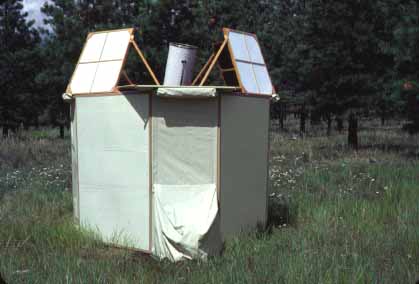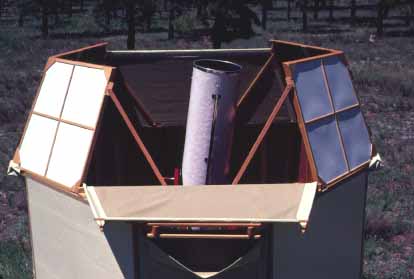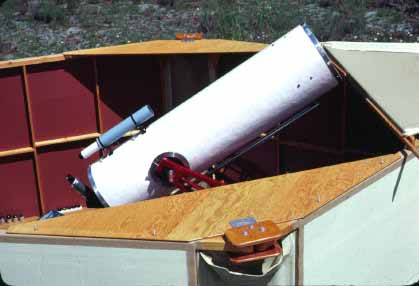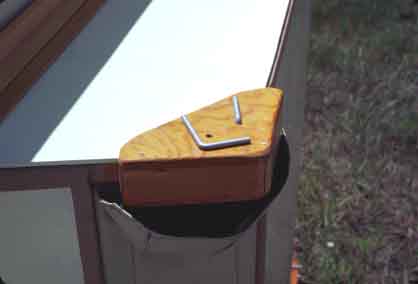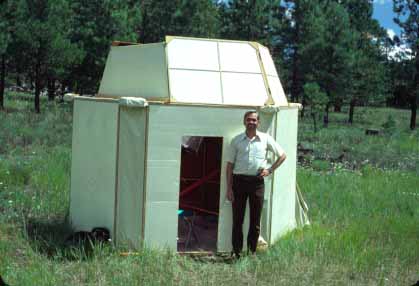 August
18, 1979. This is at one of my former favorite observing
spots 8 miles south of Happy Jack and about 3 miles north of
Bald Mesa near Antelope Draw, or Bushy Knoll, in Section 31
of the Coconino National Forest, Arizona. This was a very
nice secluded area. I never saw another human being.
However, the last time I was there, around 1983, it went all
to hell. I saw one person on a horse. I am sure by now it
unrecognizable because of the Arizona growth.
August
18, 1979. This is at one of my former favorite observing
spots 8 miles south of Happy Jack and about 3 miles north of
Bald Mesa near Antelope Draw, or Bushy Knoll, in Section 31
of the Coconino National Forest, Arizona. This was a very
nice secluded area. I never saw another human being.
However, the last time I was there, around 1983, it went all
to hell. I saw one person on a horse. I am sure by now it
unrecognizable because of the Arizona growth.In 1977 I started and finished construction of a portable observatory for protection from the wind and cold, and to have a place to sleep during an observing trip. It has an unusual shape because it was built to accommodate my Dall-Kirkham telescope. The walls are made of double corrugated cardboard from refrigerator boxes. The four coats of paint has been adequate protection from rain. The frame is made of Douglas Fir because of its strength. The observatory has a canvas floor. Without it on my first observing trip the wind blowing between the bottom of the wall panels and the ground created a virtual dust storm inside the observatory. The two panels that face to the east are permanently hinged together. The same for the two west facing walls. Each folds as one unit and weights about 50 lbs. For a number of years the panels were transported on top a 1963 Comet. Later I used my 1974 Dodge van. Although the structure may look daunting to erect, it actually only takes about a half hour.
In 1983 the portable observatory got an Honorable Mention at the Riverside Telescope Maker’s Conference. Ernie Williams, who for many years ran the audio visual part of the conference, showed up the following year at RTMC with a portable observatory he made from blue tarp material. It appeared to be the same type of material ACE Dome used years later. A few years later he improved upon his design by modifying a commercially made camping tent. I inspired Ernie with my portable observatory and Ernie may have been the inspiration for some of the canvas or tarp like portable observatories that are now available. I may have been the seed of all this. I’ll never know.


